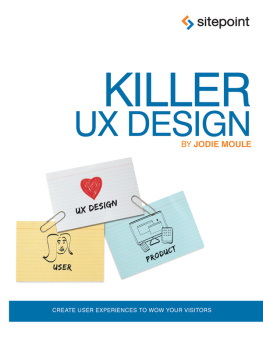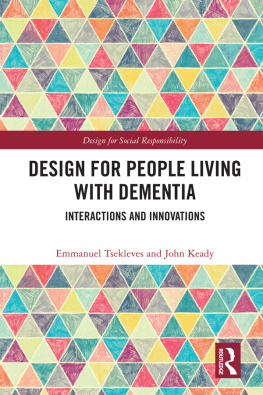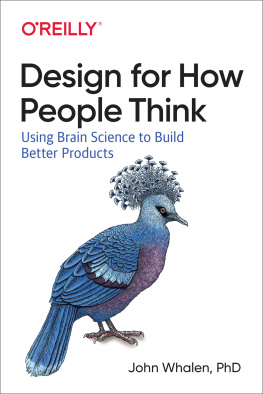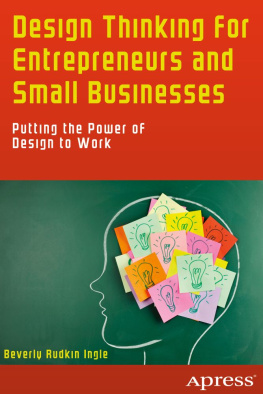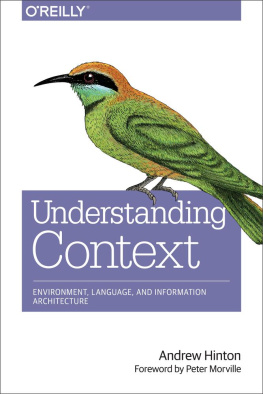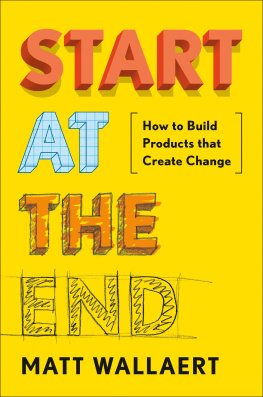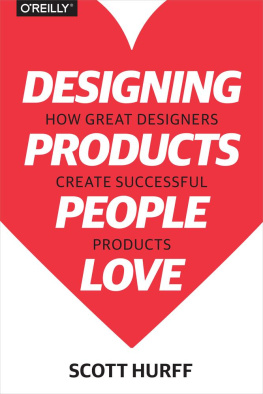Killer UX Design
Copyright 2012 SitePoint Pty. Ltd.
Product Manager: Simon Mackie
Technical Editor: Diana MacDonald
Expert Reviewer: Matt Magain
Indexer: Fred Brown
Editor: Kelly Steele
Cover Designer: Alex Walker
Notice of Rights
All rights reserved. No part of this book may be reproduced, stored in a retrieval system or transmitted in any form or by any means, without the prior written permission of the publisher, except in the case of brief quotations embodied in critical articles or reviews.
Notice of Liability
The author and publisher have made every effort to ensure the accuracy of the information herein. However, the information contained in this book is sold without warranty, either express or implied. Neither the authors and SitePoint Pty. Ltd., nor its dealers or distributors will be held liable for any damages to be caused either directly or indirectly by the instructions contained in this book, or by the software or hardware products described herein.
Trademark Notice
Rather than indicating every occurrence of a trademarked name as such, this book uses the names only in an editorial fashion and to the benefit of the trademark owner with no intention of infringement of the trademark.
Published by SitePoint Pty. Ltd.
48 Cambridge Street Collingwood VIC Australia 3066
Web: www.sitepoint.com
Email: business@sitepoint.com
About Jodie Moule
Jodie Moule is co-founder and director of Symplicit, an experience design consultancy based in Australia that focuses on research, strategy, and design services. With a background in psychology, her understanding of human behavior is central to helping businesses see their brands through the eyes of customers, influencing the way they approach the design of their products, systems, and processes.
About SitePoint
SitePoint specializes in publishing practical, rewarding, and approachable content for web professionals. Visit http://www.sitepoint.com/ to access our books, blogs, newsletters, videos, and community forums.
To my best friend, business partner, husband, and father of our wonderful children, Blake and Darci. This is for you Steve, because without you, it would not have been possible. Love you lots. To Blake and Darci, I wonder what the future holds? Hold on tight and make the most of every moment. Love Mummy.
Preface
When I embarked on my career as a psychologist, I never imagined Id end up designing technology products and services. Funny where you end up in life, and lucky for me all those years at university werent wasted: the business of understanding humans and the way they behave is critical to designing. With the digital and physical worlds merging more than ever before, it is vital to understand how technology can enhance the human experience, and not cause frustration or angst at every touchpoint. To create technology that seamlessly fits into our daily lives, theres a simple formula. First, consider the person attached to your technology solution and the context in which theyll be using your creation; then, design your solution and involve users in the process to refine your thinking. Today, technology is used to change attitudes and behavior, creating amazing challenges for designers. And if we want to create products and services that have the power to educate people so that they may live better lives, or help to reduce the time people take to do certain tasksor even attract them to our products instead of our competitorswe need to first understand what makes them tick. User-friendliness is fast becoming a necessity in product design. Nevertheless, we still have a long way to go to deliver on our users (high) expectations, and this will only increase as technology and the real world continue to merge. Understanding behavior allows us to change the customer experience, and that change happens through great designyour great designs.
What is this book about?
This book aims to be an introduction to user experience design. UX design is an approach that starts by understanding the behavior of the eventual users of a product, service, or system. It then seeks to explore the optimal interaction of these elements, in order to design experiences that are memorable, enjoyable, and a little bit wow. The premise of this book is the need to understand how people behave (their habits, motivators, and drivers) to make well-informed design decisions that produce a great customer experience for your users.
Case Study to Bring It All to Life
Depending on the type of business problem you are solving and the product you are designing, there are several ways to approach a design problem. To bring the theory to life, Ill be presenting a case study so you can see the theory discussed in each chapter applied to a real-life example. Its my intention that through this example, youll see the benefits a UX process can bring to your projects. I encourage you to think about what you would have done if this project was thrust upon you at work, or if a client approached you to deliver an app as a way to help enhance your learning as you read along.
Who Should Read This Book
This book was written for people who have heard of UX and want to learn more about the basics, or expand their knowledge on distinct aspects of the UX process. If you are charged with understanding how to apply a UX process to your projects, but are unsure quite where to startthis book is for you. My aim was to present UX design in a fun, practical, and non-academic way, so that the concepts are accessible and can be tried out immediately. In this regard, this book is for newcomers to the UX space rather than seasoned professionals. However, those with a UX background and some experience might be interested to see how we approached design problems.
Whats in This Book
The book contains the following eight chapters:
This chapter defines UX design and considers what makes a great experience. Youll learn why this should matter to you when designing.If youre unable to understand the problem, you cant solve it. This chapter explores the problem that your client or company aims to solve with the UX process, and explains some useful ways to ensure your for success.In order to produce great usable designs, you need to gain empathy and understanding for your users. Well address all the research methods available to you and look at how to recruit users for testing.In this chapter, we discuss how to analyze the data youve collected from your user testing. Then well delve into behavior design and reveal why understanding behavior and habits is intrinsic to your design work.Once weve conducted an analysis, we move towards using sketching as a tool. Sketching is cost-effective and easy to do, and helps to generate lots of ideas quickly so that you can select a few really great ones to take to the next stage.Forming working models of your design is the best way to assess whether your solutiononce imagined beyond paperis going to work or not. Creating rapid prototypes to refine your thought process and ensure youre on the right track is a critical step in your UX process.The whole reason for creating prototypes is to test them with your users, in order to validate whether your design is worth pursuing. This process allows you to ascertain whether users understand your design, and allows for further refining. Final tweaks now will give you confidence that the decisions youve made along the way are the right ones.This final chapter focuses on testing and evaluating your solution as you prepare to launchand beyond. Once youve let it loose on the market, youll continue to learn from users habits and behaviors as they use your product, bringing your UX process full circle .

